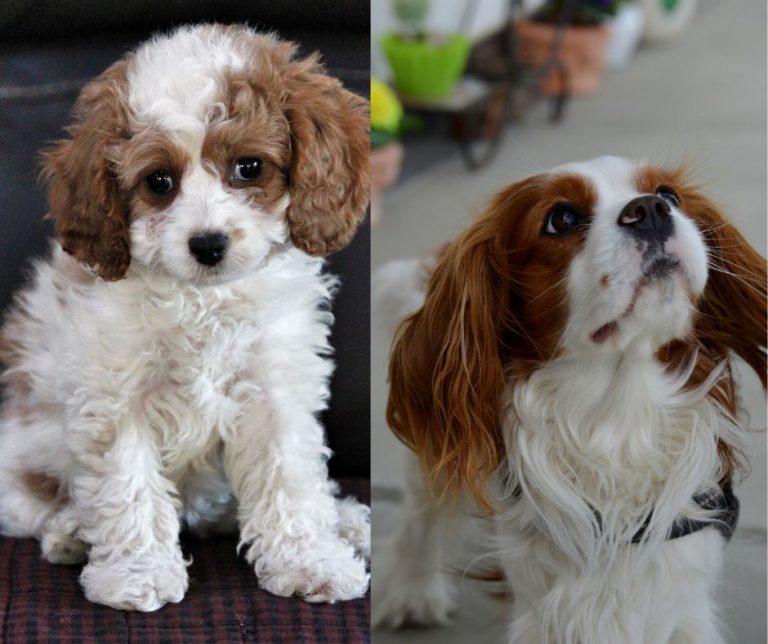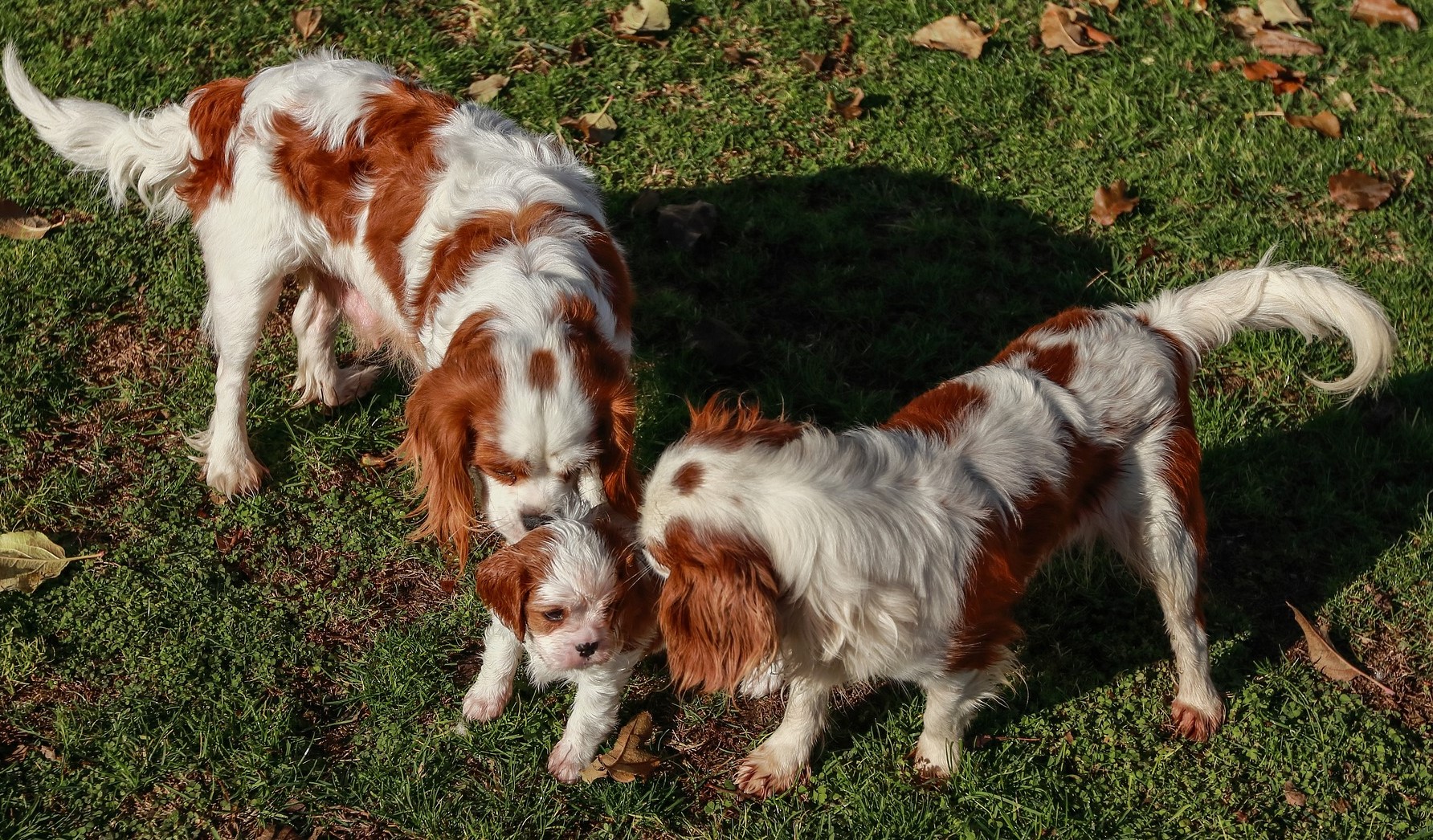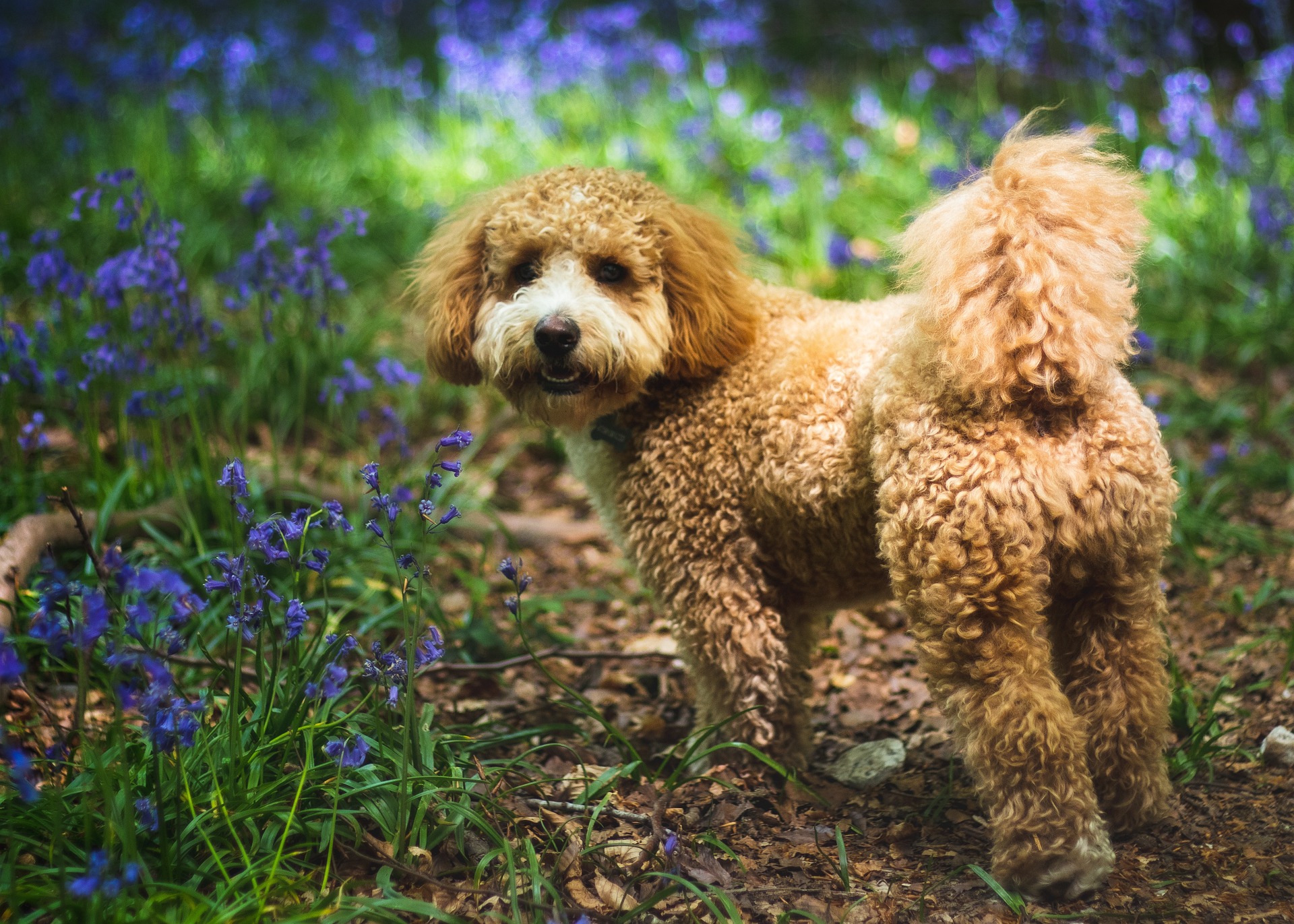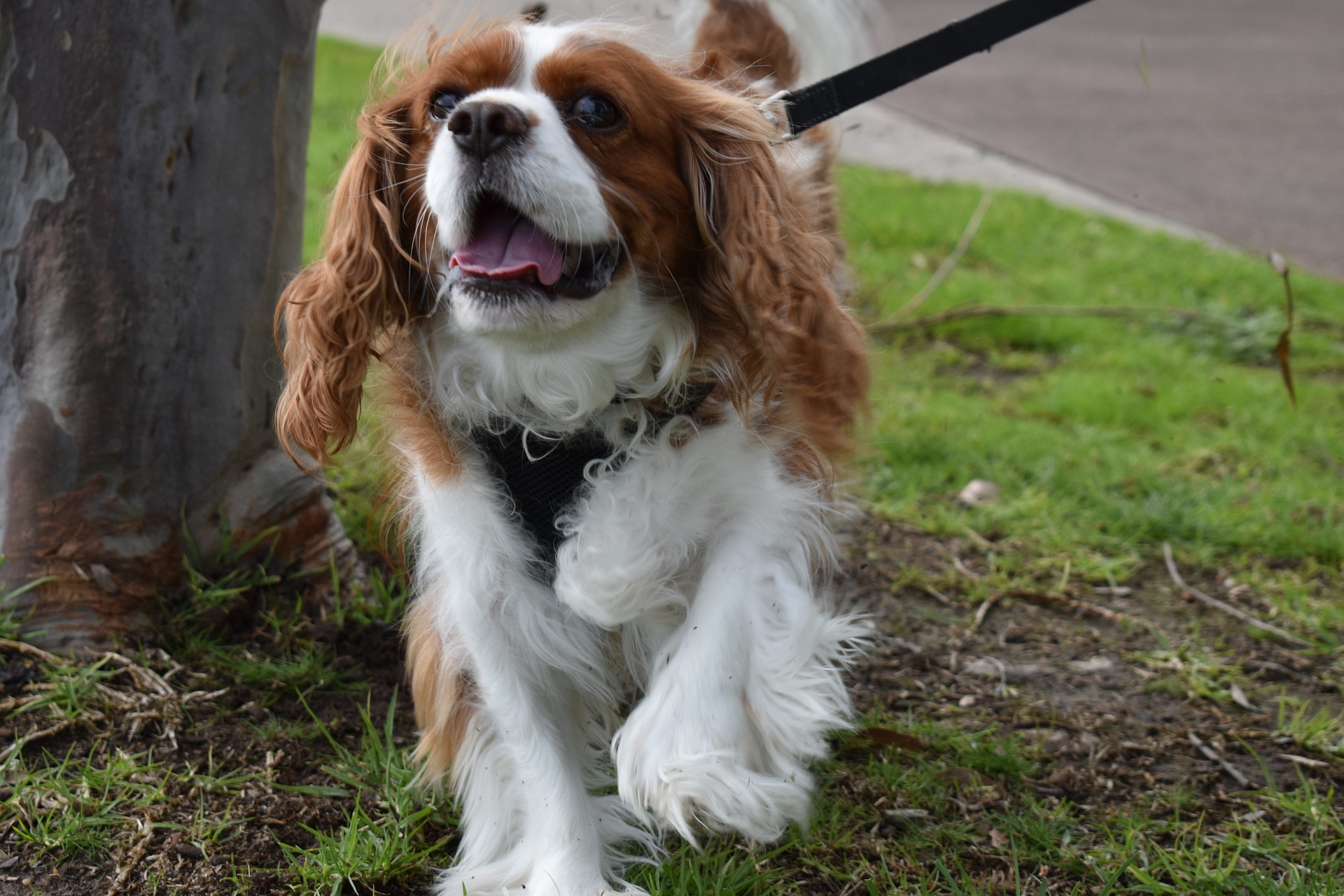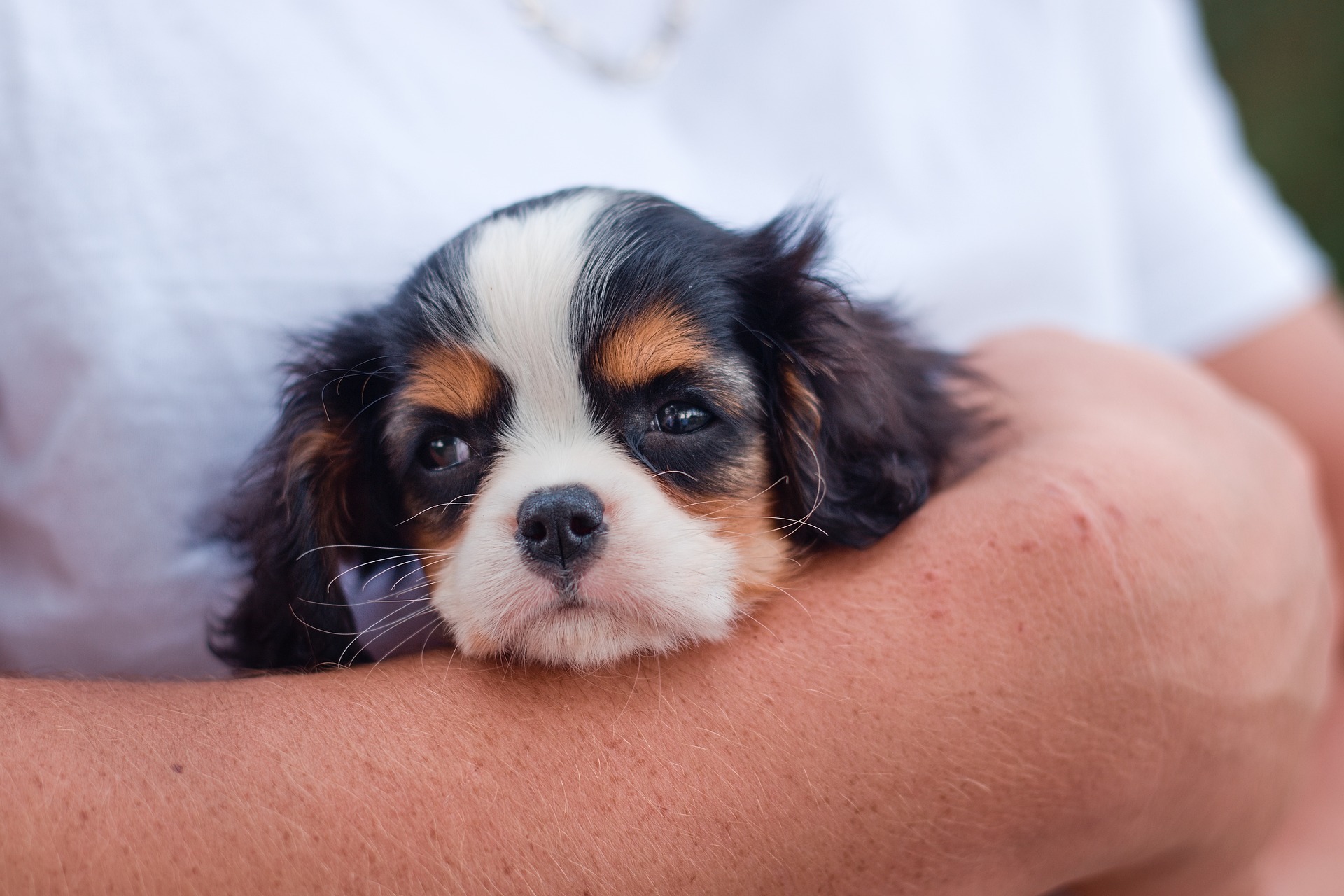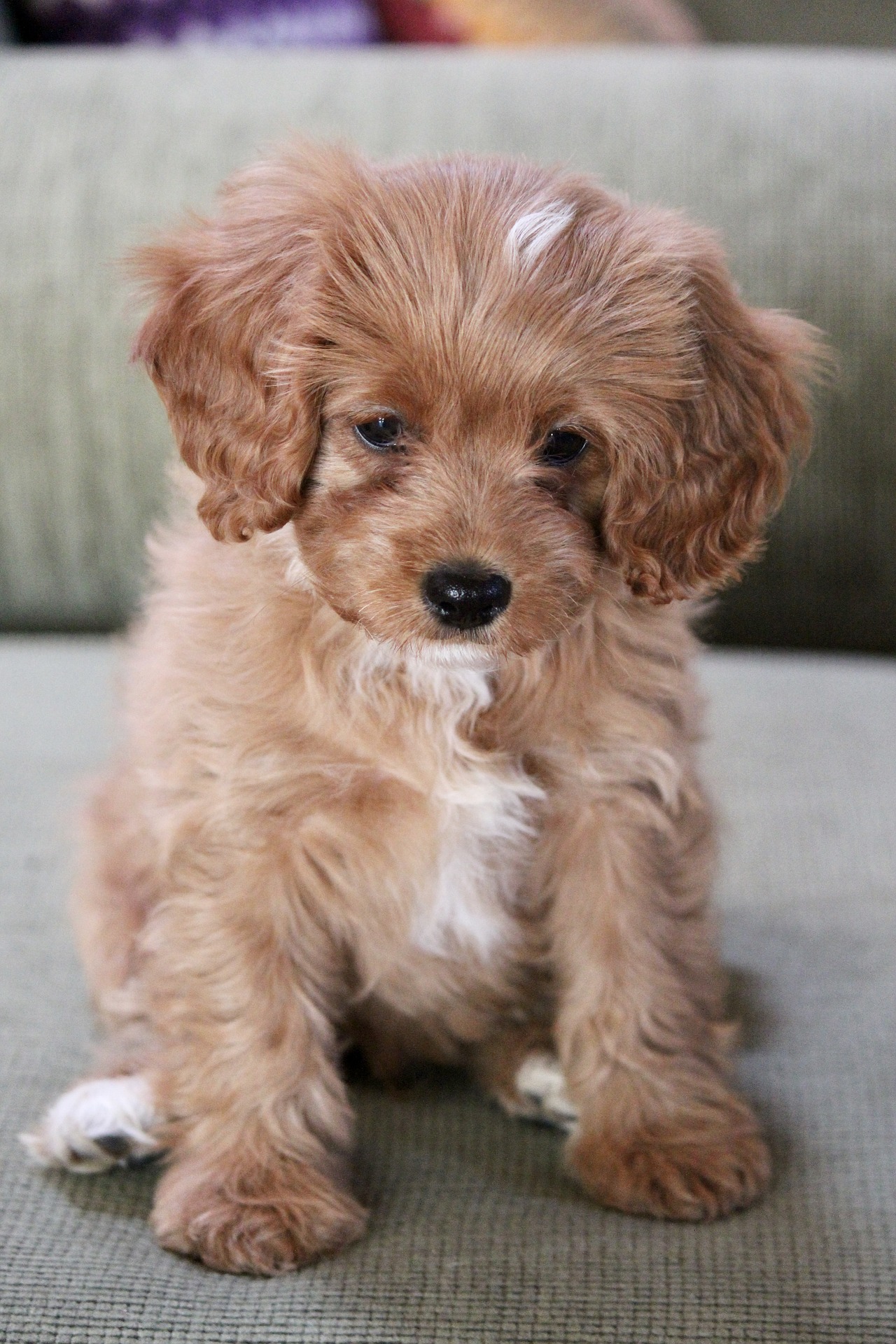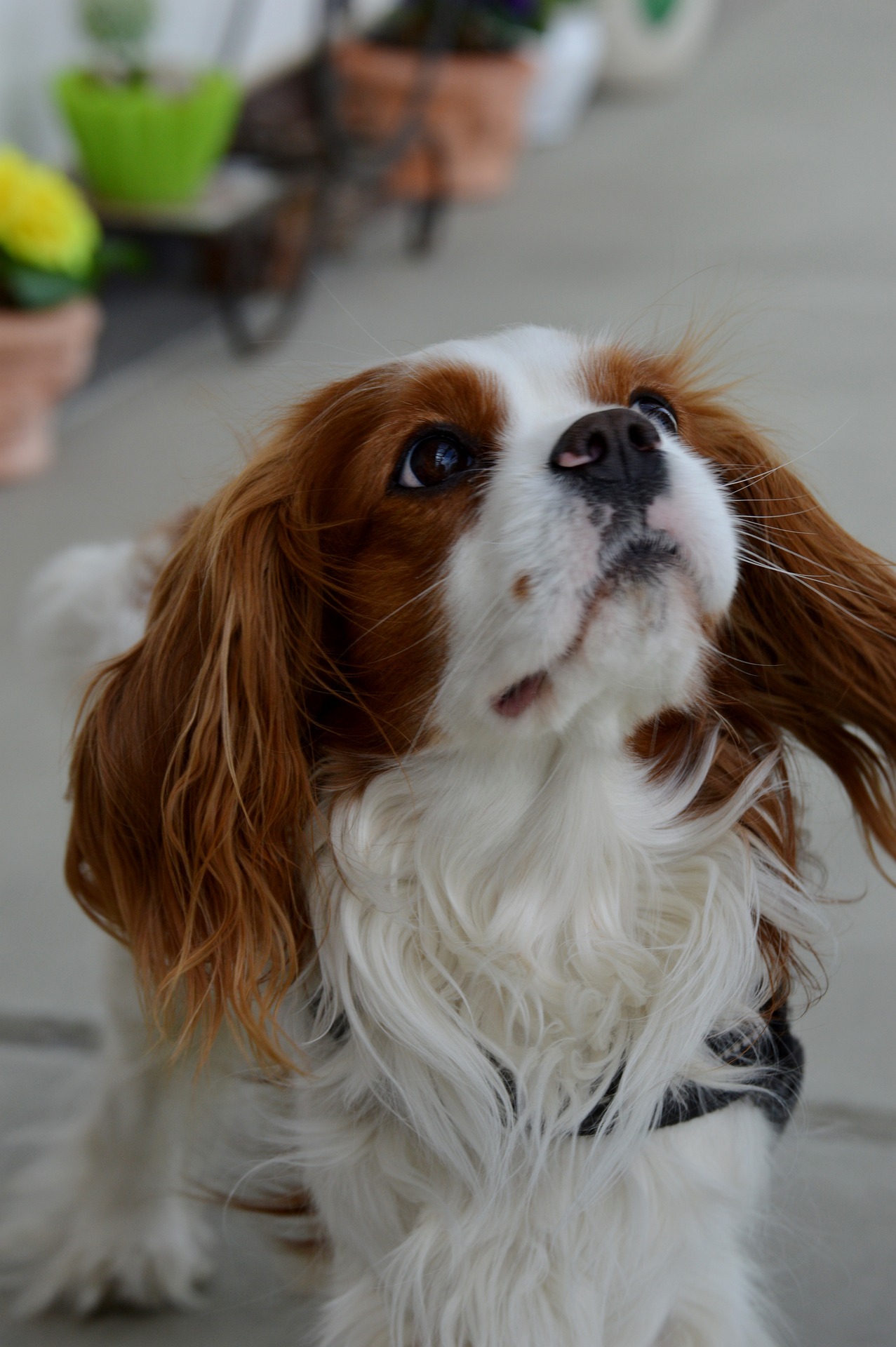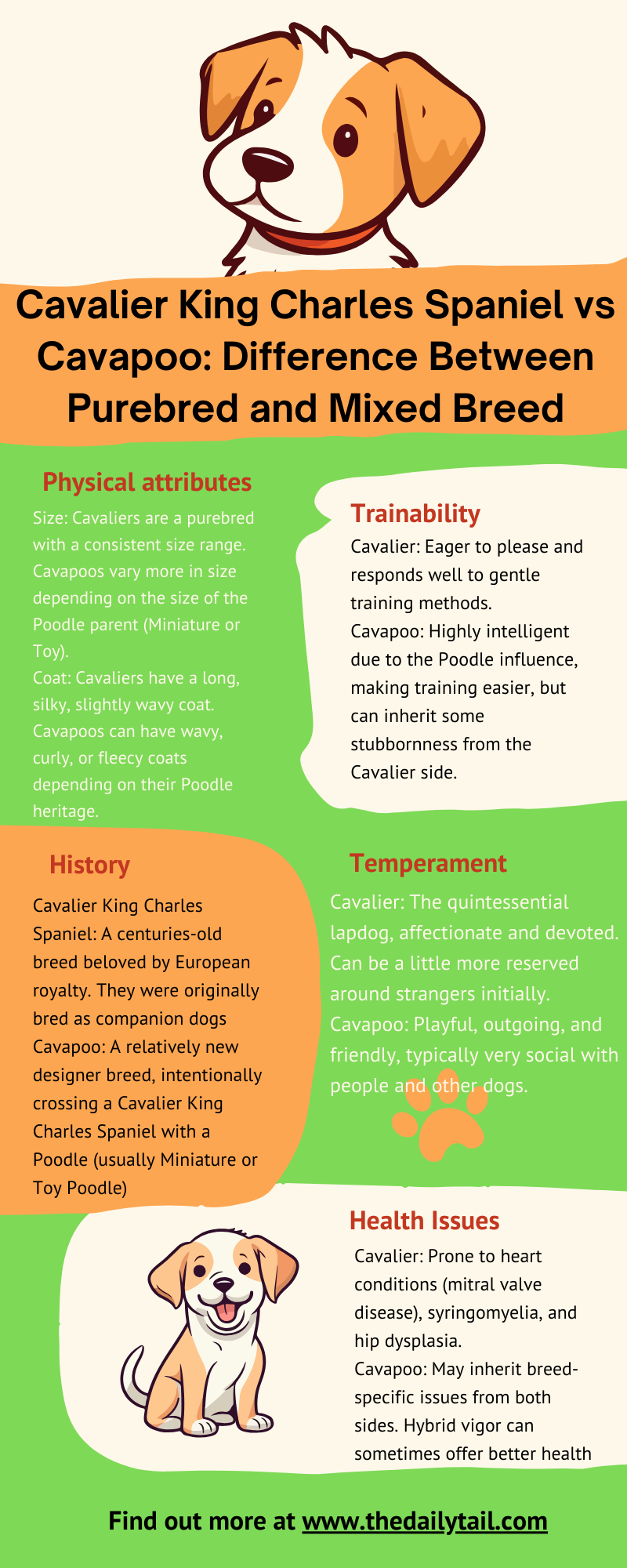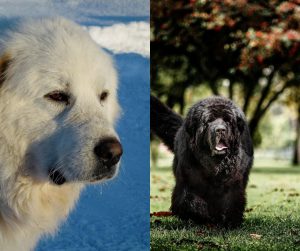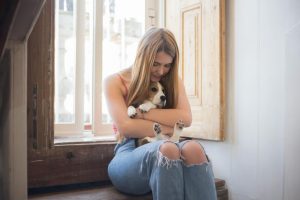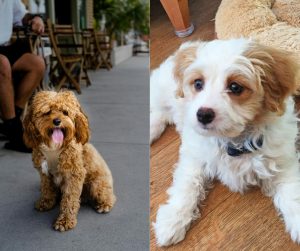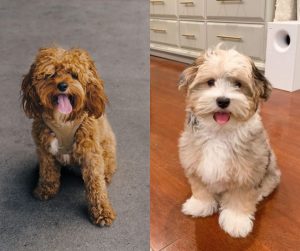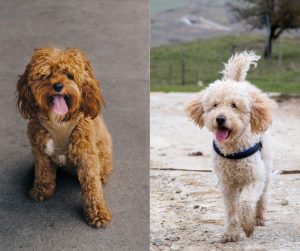As someone who’s adored the gentle spirit of a Cavalier King Charles Spaniel and the playful personality of a Cavapoo, I know these charming breeds can both steal your heart! But which one is the perfect fit for you? Let’s dive into their unique qualities and help you find your ideal canine companion.
When considering a furry addition to the family, the delightful charm of the Cavalier King Charles Spaniel often catches the eye. Known for their genteel nature and distinctive, regal appearance, Cavaliers hold a storied place in canine history. A perennial favorite, this breed’s affectionate manner and adaptable personality make it a widely beloved pet.
Balancing the Cavalier’s allure is the Cavapoo, a more recent crossbreed that combines the best traits of its parent breeds. The Cavapoo’s intelligence and low-shedding coat have quickly made it a sought-after companion for families, particularly those with allergy concerns. Their hybrid vigor often brings a robustness that is a complement to their amiable and sociable nature.
Let’s take a look at the Cavalier King Charles Spaniel vs Cavapoo dog breed comparison.
Key Takeaways
- The Cavalier King Charles Spaniel boasts a rich history of companionship and regal bearing
- Cavapoos blend the hypoallergenic traits of Miniature Poodles with the temperament of Cavaliers
- Both breeds are known for their friendly natures and suitability for family life
Breed Origins and History
In comparing the Cavalier King Charles Spaniel and the Cavapoo, it’s interesting to note their distinct histories and how they’ve both captured hearts. The former breed boasts a royal legacy, while the latter emerges as a blend tailored for affection and fewer sneezes.
Cavalier King Charles Spaniel History
Originating from England, the Cavalier King Charles Spaniel has a history steeped in aristocracy. This breed was a favorite among royalty, with its roots dating back to the era of King Charles II. The British Kennel Club recognized these spaniels in 1945, and they’ve since become the affectionate companions they are known as today.
The King Charles Spaniel is in the same group as the English Toy Spaniel, Cocker Spaniel, and other Spaniel breeds.
Cavapoo Origin
The Cavapoo dog breed is a newer entrant to the canine world, hailing from Australia during the late 20th century. This hybrid combines the Cavalier King Charles Spaniel’s sweet disposition with the hypoallergenic coat of the Poodle, making it an instant hit for families seeking a friendly, low-shedding dog.
Poodle Ancestry
Key to the Cavapoo puppy’s appeal is the Poodle, an intelligent and elegant breed. The Poodle, which comes in three sizes (toy, miniature, and standard), boasts a rich history as a retriever and performer in France and Germany. Breeders have selectively bred the Poodle’s non-shedding coat into many designer dogs like the Cavapoo. This Poodle mix can be achieved with a Miniature Poodle or a Toy Poodle.
Physical Characteristics
When choosing between the Cavalier King Charles Spaniel vs Cavapoo puppy, it’s important to consider their distinct physical traits. These span size, weight, and coat characteristics that set them apart.
Cavalier King Charles Spaniel Description
The Cavalier King Charles Spaniel reveals its royal lineage through its graceful appearance. Typical size attributes include:
- Height: 12 to 13 inches at the shoulder
- Weight: Weighs between 13 to 18 pounds
They flash a silky, smooth coat that comes in enchanting color combinations such as Blenheim (chestnut on white), ruby (solid rich red), tricolor (black and white with tan markings), and black and tan. Their expressive eyes and floppy ears add to their endearing look.
Cavapoo Characteristics
Cavapoo pups blend the physical traits of a Cavalier King Charles Spaniel with a Poodle. Key aspects of their appearance include:
- Coat: Can range from wavy to curly and is often considered hypoallergenic
- Coat Colors: Common colors include shades like apricot, red, tan, black and tan, and sometimes white
A Cavapoo’s coat is not only attractive but also practical, as it tends to shed less, making it a popular choice for those with allergies.
Size Comparison
When they sit side by side, you’ll notice that Cavapoos and Cavaliers share a lot of similarities in size, but there are slight differences. Here they are in numbers:
| Breed | Height (inches) | Weight (pounds) |
|---|---|---|
| Cavalier King Charles | 12 – 13 | 13 – 18 |
| Cavapoo | 9 – 14 | 7 – 18 |
Cavapoos can be a tad smaller due to the Poodle’s influence, but they can sometimes surpass the upper weight range depending on their specific Poodle parentage. It’s this charming variance that gives each Cavapoo a unique twist, all while staying in the petite realm that makes both breeds so companionable.
Personality and Temperament
When considering a canine companion, it’s essential to understand their personality and temperament to ensure they match your lifestyle. Both Cavalier King Charles Spaniels and Cavapoos have traits making them excellent family pets, but their individual characteristics can be quite different.
Cavalier Temperament Traits
Cavalier King Charles Spaniels are the epitome of an affectionate pet; they thrive on human interaction and are known to form strong bonds with their families. This breed exhibits a gentle demeanor and is notorious for its friendly nature towards both people and other animals. Their intelligence does not just shine through in their expressive eyes but also in their trainability. Cavaliers are usually easy to train due to their eagerness to please their owners and their attentive nature.
- Affectionate: Highly affectionate, loving to cuddle and be close to their owners
- Friendly: Welcoming to strangers and rarely show aggression
- Gentle: Known for their calmness and lack of prey drive, making them ideal for families
- Playfulness: Display bursts of energy and playfulness that are endearing
Cavapoo Behavioral Aspects
Cavapoos, a mix between Cavalier King Charles Spaniels and Poodles, inherit the intelligence of the Poodle, making them quick learners and easy to train. They have a balanced personality, with a dash of playfulness and an energetic spirit that makes them suited for more active households. Cavapoos are affectionate and loving, often seeking the attention and approval of their owners. They typically blend the adaptability of the Cavalier with the Poodle’s active nature.
- Intelligent: Their poodle lineage contributes to their high intelligence level
- Loving: Dedicated and loyal to their families, they make excellent companion animals
- Playful and Energetic: Love to engage in play and require mental and physical stimulation
- Prey Drive: May have a slightly higher prey drive than Cavaliers due to the Poodle’s hunting background
Health and Lifespan
When considering a canine companion, it’s important to recognize that each breed comes with its own set of health considerations and anticipated longevity. The Cavalier King Charles Spaniel and the Cavapoo breed are no exceptions, with distinct health issues to be aware of and different life expectancies to consider.
Known Health Issues
Cavalier King Charles Spaniel:
- Mitral Valve Disease (MVD): A common heart condition, particularly in older Cavaliers
- Syringomyelia (SM): A serious neurological condition that occurs due to the malformation of the skull
- Hip Dysplasia: A genetic disorder where the thigh bone doesn’t fit snugly into the hip joint
- Obesity: Can lead to other health problems. Owners should monitor their dog’s diet and ensure regular exercise
Cavapoo (Cavalier King Charles Spaniel/Poodle mix):
- Inherited a mix of potential health problems from both parent breeds.
- Poodles are prone to hip dysplasia as well as progressive retinal atrophy and cataracts, which can be passed on to Cavapoos.
Expectancy of Life
- Cavalier King Charles Spaniel: Typically, they have a lifespan of about 9 to 14 years
- Cavapoo: The crossbreed tends to enjoy a similar life expectancy, sometimes reaching up to 15 years with proper care and favorable genetics
Common Disorders
- Progressive Retinal Atrophy (PRA): It affects both breeds, with symptoms including deteriorating vision and potential blindness
- Cataracts: Can occur in both Cavaliers and Cavapoos, potentially leading to opacity in the lens of the eye, causing vision impairment
- Obesity: Affecting both breeds, can exacerbate other conditions such as hip dysplasia
Care and Maintenance
When bringing a Cavalier King Charles Spaniel or a Cavapoo into your home, understanding their care and maintenance is crucial. They’re not just cute faces; they have needs that are essential for a healthy and happy life. Let’s get right into what these lovable pups require.
Grooming Needs
Cavalier King Charles Spaniel: They sport a silky, flowing coat that requires regular brushing several times a week to prevent tangles and mats. Their ears should also be checked weekly to avoid infections due to their longer, floppy nature.
Cavapoo: This crossbreed boasts a combination of the Cavalier’s silkiness and the Poodle’s curls, leading to varied coat types. Depending on which trait is more dominant, brushing might be needed anywhere from several times a week to daily. Depending whether you have an F1 Cavapoo or F1b Cavapoo, your puppy might be hypoallergenic or not. A Poodle mix between a Cavapoo and a Poodle, or two Cavapoos is more likely to be hypoallergenic.
Grooming Table:
| Breed | Brushing Frequency | Coat Considerations |
|---|---|---|
| Cavalier King Charles Spaniel | Several times a week | Silky, prone to tangles |
| Cavapoo | Several times a week to daily | Can be silky or curly, depends on dominant trait |
Diet and Nutrition
Cavalier King Charles Spaniel: They’ll thrive on high-quality dog food tailored to their age, size, and energy level. They are prone to weight gain, so it’s vital to keep an eye on their food intake and not fall for those pleading eyes begging for treats.
Cavapoo: Also benefiting from quality food, they share the Spaniel’s propensity for gaining a few extra pounds easily. Careful diet regulation and the right balance of nutrients can help maintain their health and cater to their activity levels.
Nutrition Checklist:
- High-quality dog food
- Tailored to life stage (puppy, adult, senior)
- Proportionate to exercise needs
- Awareness of weight management
Exercise Requirements
Cavalier King Charles Spaniel: They possess a moderate energy level and will need regular daily exercise like walks or play sessions in the yard.
Sufficient activity keeps them mentally stimulated and helps avoid unwanted behaviors.
Cavapoo: Typically, they are slightly more energetic, and while they love to cuddle, they definitely need daily exercise to burn off steam.
Mixing in different activities such as walking, fetching, and puzzle games can keep them engaged and content.
Exercise Tips:
- Daily walks (morning or evening is great for both breeds)
- Regular playtime (toys, fetch, interactive games)
- Mental stimulation (puzzle toys, training exercises)
Compatibility with Families
When it comes to bringing a furry companion into a household, families often ponder over which breed will seamlessly blend into their dynamic. Two breeds in this consideration are the Cavapoo and the Cavalier King Charles Spaniel dog breed, each known for their affable nature and love for human interaction.
Interaction with Children
Cavalier King Charles Spaniels are renowned for their gentle and patient demeanor, making them exceptionally suitable for families with children.
They exude a calming presence and have a friendly nature that resonates well with kids. This breed is devoted and typically adaptable to playing gently with younger members of the family.
Cavapoos, a crossbreed of the Cavalier King Charles Spaniel and Poodle, inherit the sociable qualities of both parents.
They tend to be energetic, which can match the vivacity of children, creating a playful environment. Their social nature and intelligence make them keen on participating in games and learning new tricks alongside their little human companions.
Living with Other Pets
The Cavalier King Charles Spaniel is often as friendly with other pets as they are with humans.
Their docile personality allows them to coexist peacefully and even form strong bonds with other household animals.
Similarly, Cavapoos with their adaptive nature often thrive in homes with other pets.
They generally exhibit a cooperative spirit, thanks to their social upbringing. It’s noteworthy that proper introductions and early socialization greatly contribute to fostering a harmonious relationship between pets.
Training and Intelligence
When it comes to trainability and intelligence, both Cavaliers and Cavapoos bring joy and challenges to the training experience. These breeds shine with their eagerness to please and overall smartness, making the training journey a delightful one for both beginners and experienced dog owners.
Trainability and Education
Cavalier King Charles Spaniels are renowned for their gentle nature and responsive attitude towards training.
They thrive on positive reinforcement, and it’s pretty common for them to pick up new commands with ease. This makes their trainability relatively straightforward, especially for first-time dog parents.
On the other hand, Cavapoos, a mix of Cavaliers and Poodles, inherit the Poodle’s sharp intelligence and are very much trainable.
Their active nature also means they often excel in training settings that combine mental stimulation with physical activity. A Cavapoo’s smartness can be a wonderful asset in a variety of training situations.
Cognitive Abilities
Diving into cognitive abilities, the brains of these breeds are pretty impressive. Cavaliers may not always show their intelligence in conventional ways, but they are very smart when it comes to understanding human emotions and responding accordingly.
It’s their emotional intelligence that often catches the hearts of their owners.
Cavapoos are notable for their ability to quickly learn and adapt. Their poodle heritage gifts them a certain sharpness which, combined with the Cavaliers’ sensitivity, creates a dog who is not only smart but also highly attuned to their human’s needs.
Their cognitive abilities make them ideal companions for those who enjoy mentally engaging their pets in activities such as puzzle games and advanced obedience tasks.

